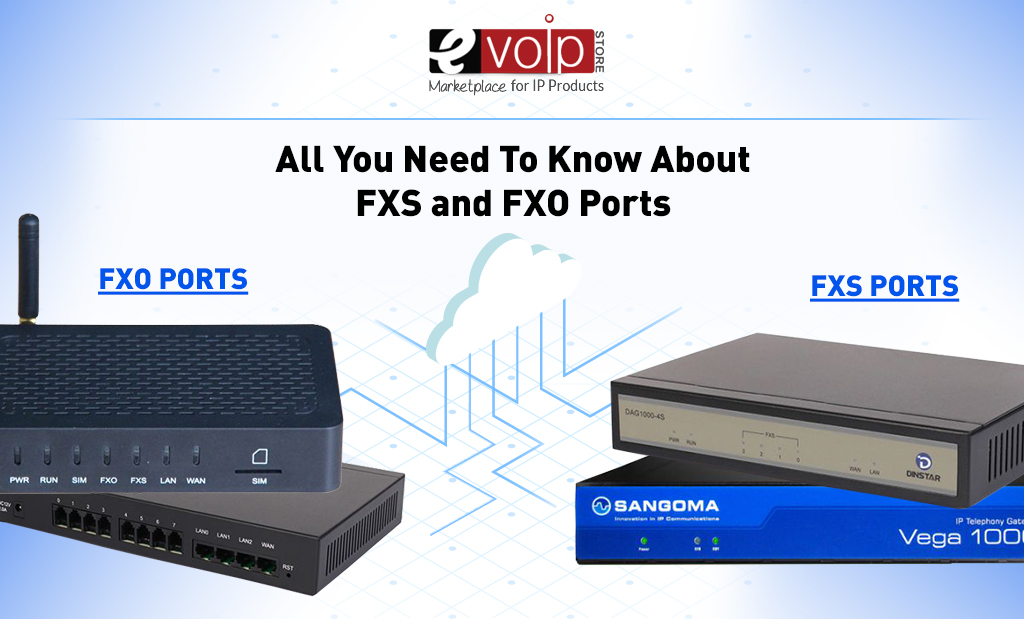All You Need To Know About FXS and FXO Ports

Businesses are increasingly relying on technology in order to resolve many corporate glitches and improve operational efficiencies and better management of expenses. Communication is one of the core foundations of a company that helps in channelizing the messages and deploy better resource management in the organization. With an aim to reduce communication costs and better integration of data and voice network, VoIP has emerged as a leading communication solution for business of all kinds.
VoIP or Voice over Internet Protocol has highly benefited the communication infrastructure of businesses by replacing traditional phone lines with internet-dependent connectivity. Boasting low call cost and enhanced calling experience, VoIP has transformed the communication arena for businesses across the world. With the integration of VoIP into the communication domain, businesses have been able to manage disparate phone systems and multiple voice networks.
VoIP technology is brimmed with multitudinous benefits making it a great communication tool that helps the business to reduce investment in the overall expense of the organization. A majority of businesses are already relishing the benefits of this revolutionary technology. If you are also planning to make VoIP technology a part of your communication system, then it is essential to ascertain the relevance of FXO and FXS ports.
FXO and FXS ports are the interfaces used for POTS. These ports help in establishing a call and maintaining its quality. These ports supply the required electricity, dial tone, and call signal.
What is an FXS Port?
Foreign Exchange Subscriber is port that joins the router or access server to end equipment including office phones, fax, modems, etc. it is basically a plug on the wall that facilitates dial battery, loop current ad ringing voltage in order to transmit the analogue signals. FXS port is an important element in establishing the connection.
What is an FXO Port?
FXO or Foreign Exchange Office is a port on the end communication device like a fax machine or office phone. The FXO port is another important port that connects an FXS port with the device and external telephone line.
FXS, FXO and VoIP
While adopting a VoIP phone system and buying equipment to establish the connectivity, both FXO and FXS ports play an important role in connecting traditional analogue telephone lines or PBX system to VoIP systems. If you are connecting analogue fax machine with the phone system, then an FXS port is mandatory. If you are using analogue phone lines with the phone system, one FXO port will be needed.
An FXO Gateway
An FXO gateway is required to connect analogue phone lines to an VoIP Phone System. This gateway port connects with FXS port that helps in transmitting the analogue phone lines to a VoIP call. There are different forms of FXO gateways available according to the requirements of communication infrastructure.
An FXS Gateway
An FXS gateway helps in connecting one or more lines of traditional PBX to a VoIP system. An FXS gateway can be used alternatively to connect analogue phones and reuse analogue phones with VoIP. FXS gateway is also essential to connect FXO ports to the VoIP phone system.
There is no doubt in asserting that VoIP is a great communication solution that has transformed the business domain with its ubiquitous benefits. FXO and FXS ports are the two of the most important fragment of VoIP that establishes connectivity. FXS port is a plug on the wall, whereas, an FXO is a plug on the phone. Both are the unavoidable elements of a VoIP phone system. Ascertaining it's important and understanding how it works will further help in maintaining smooth functionality of the VoIP phone systems.
